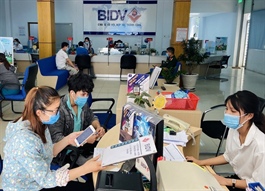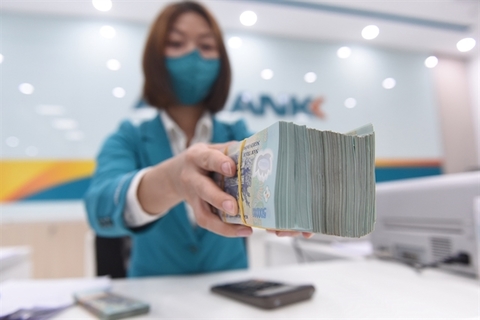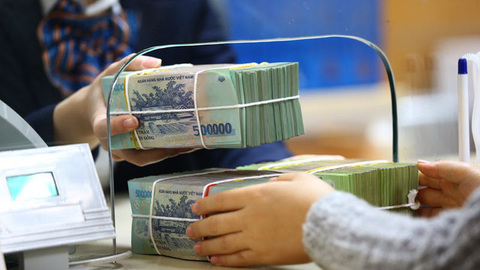Financial companies need radical transformation
Financial companies need radical transformation
The current financial companies model still has a lot of potential, despite facing challenges due to the general difficulties plaguing the economy, competition with Fintech and governance, and the ongoing unrelenting fear of the Covid-19 pandemic. The proof lies in the fact that foreign investment funds are still actively involved with several financial companies in Vietnam.
Illustrative photo.
|
Potential market
Current data from the State Bank of Vietnam shows that consumer loans in the past ten years have always been higher than the growth of outstanding loans in the whole economy, reaching 33.7% on an average during the period 2010-2020, while the overall credit balance growth rate of the whole economy reached only 17.3%. By the end of 2020, loans to serve daily needs, and consumer loans, had reached VND 1,850,000 bn, an increase of about 10.15% compared to the end of 2019 and more than ten times increase of outstanding balance at the end of 2010. In proportion, outstanding loans to serve daily needs, and consumer loans, have increased from 8.17% of outstanding loans in 2010, to cross 20.5% of outstanding loans in 2020, 2.5 times higher than in 2012, as reported by Fiingroup.
In this flow, financial companies have made a remarkable transformation. As of March 2021, there were 16 financial companies licensed to operate consumer loans with a total charter capital of around VND 22,000 bn. The financial companies with the highest charter capital are FE Credit with VND 7,328 bn, with the lowest in FCcom of VND 500 bn. This group has made great contribution to promoting more efficient and developed consumer loans. The target customer segment of these companies is usually a group of customers that have not been noticed by banks and a group of customers with low to moderate income, who need financial resources for purchasing household appliances, buying a car, studying abroad, medical treatment, and other essential and necessary needs in life.
By the end of 2020, FE Credit's total credit balance was about VND 66,000 bn, and HD Saison's customer loan balance was VND 14,230 bn. Home Credit's customer loan balance is currently around VND 20,000 bn, and SHB Finances are at about VND 3,600 bn. Regarding the lending market share of financial institutions, FE Credit has risen to the top of the consumer finance market, accounting for 52% of the domestic consumer market share, far ahead of the two competitors, namely, Home Credit with 17%, and HD Saison with 11%, and other competitors such as Mcredit with 7%, Shinhan Finance with 6%, and Mirae Asset with 5%.
Vietnam has a population of about 90 million people, of which about 75% are living in rural areas, and an estimated 68 million people do not have comprehensive access to consumer finance needs. Out of this proportion, the younger population accounts for a large majority. About 20 million adults living in urban areas are also potential customers for financial services, including consumer finance. Vietnam's population is forecast to continue to increase and reach 100 million by 2025. Therefore, the potential of this market is great and actively growing.
Vietnam is a developing country in Southeast Asia, with a stable economy. However, administrative procedures and tariffs continually need to be improved, creating conducive conditions for foreign investors to operate, as well as to be able to attract new investors. The national database system is also gradually improving, and the transition from identity card to citizen identification card with a chip will help financial institutions have more accurate data in the process of loan appraisal and approval for customers, thereby reducing risks associated with information tampering and identity theft. This is also the reason why many foreign investors want to enter this market through strategic cooperation or by buying financial assets from banks.
Difficulties and challenges
Besides such advantages, there are also many challenges that financial companies have to continually face. The growth rate of the overall credit outstanding balance of the whole economy in the past ten years reached 17.3%. However, due to the negative impact of the Covid-19 pandemic, credit growth in 2020 reached only 12.17% compared to 2019. The growth rate of outstanding loans of the economy in 2021 has improved compared to 2020 but still slower than before, and consumer loans are also significantly affected. At the same time, the Covid-19 pandemic and the 4.0 technology revolution, also forced customers to turn to online shopping and transactions. Therefore, when reviewing the business strategy to adapt to the new situations, especially digital transformation, it is becoming a serious challenge for financial companies.
The explosive trend of new business models applying Fintech, such as online lending and peer-to-peer lending in past time, are also warnings, forcing consumer finance to transform. Up until now, only FE Credit has completed building an information technology system that can provide online lending services for more than 230,000 loans, equivalent to an average of 350 loans per day through the $NAP application.
The bad debt ratio is also an issue that financial institutions need to pay attention to. In 2020, FE Credit's bad debt ratio was 6.6%, equivalent to a bad debt value of about VND 4,300 bn. HD Saison's bad debt value is currently about VND 826 bn, equivalent to 5.8%. According to Circular 23/2020 dated 31 December 2020, of the State Bank of Vietnam, financial companies are granted credit with a term of upto one year for investment and trading in stocks if they ensure the limits and prudential ratio as prescribed by law, and bad debt ratio is below 3%. Thus, when the bad debt ratio does not meet the regulations, the expansion of the lending of financial companies in order to expand market share and increase loan sales is also at a disadvantage.
Looking at the proportion, consumer credit in Vietnam currently accounts for just over 12% of total outstanding loans, lower than many countries in the region, such as China at 21%, and ASEAN group at 34%. In this, the proportion of consumer credit implemented by financial companies accounts for about 7.7% of the total outstanding loans of the economy, with the rest carried out by commercial banking companies. Up to this point, the market still has some shortcomings, such as its small scale, and focusing mainly on a few large companies, with the top three companies accounting for about 80% of the market share. In addition, asset quality has decreased due to general difficulties in the economy, business profits are not satisfactory because demand for consumer loans has decreased, and people's knowledge about finance and credit is still rather limited.

























